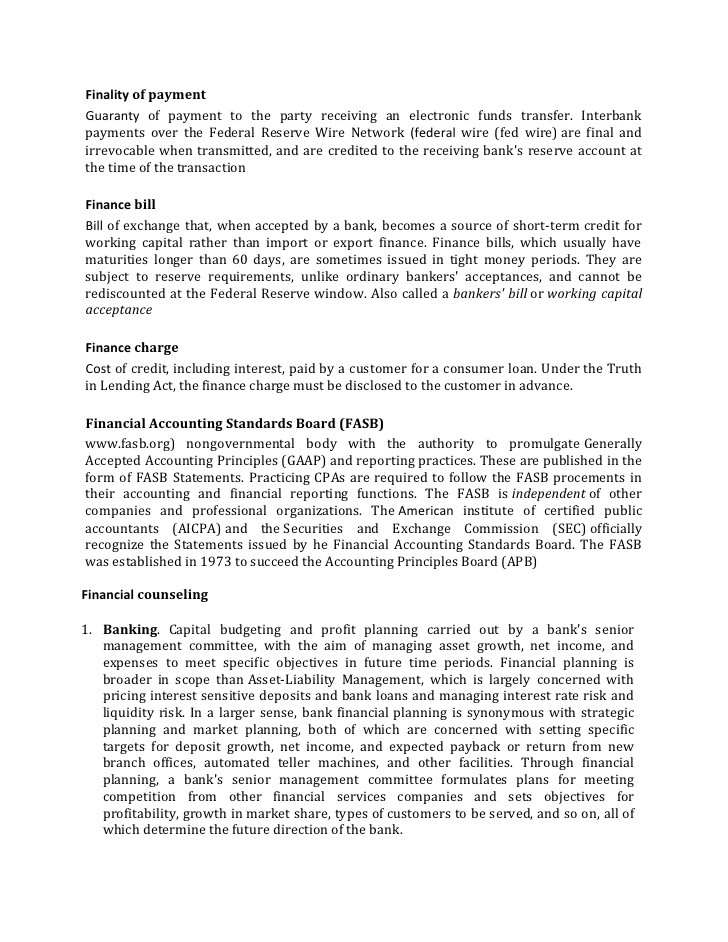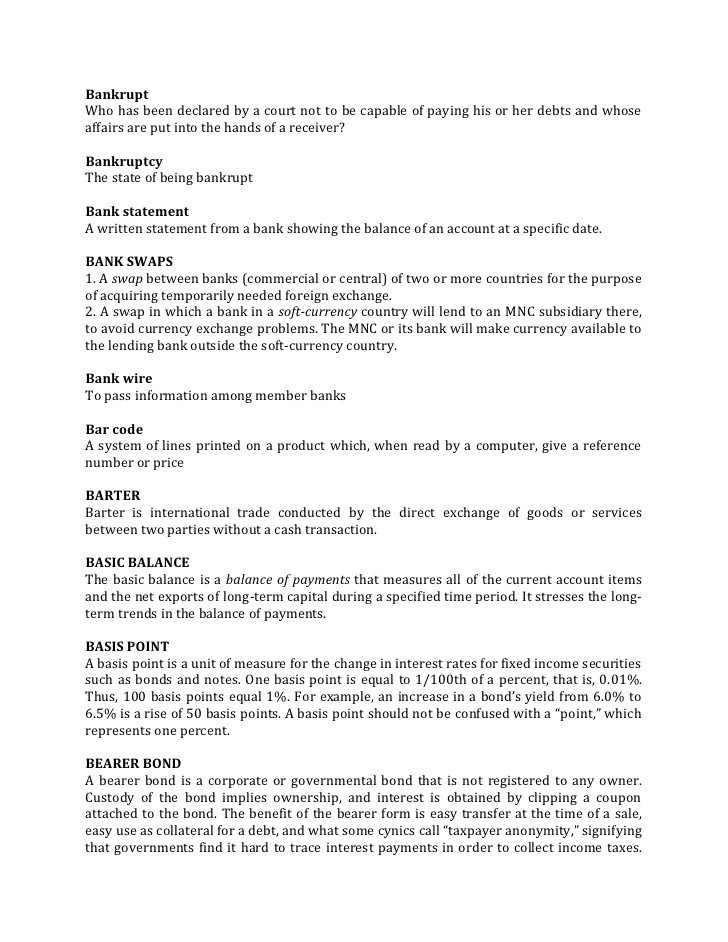Assessing Bank Assets Are Your Savings Safe Fundamental Analysis Explained Market Dhara Web Site
Post on: 14 Апрель, 2015 No Comment

Home Fundamental Analysis Explained Assessing Bank Assets: Are Your Savings Safe?
1/10/2012 2:27:00 AM
Administrator
Posts: 562
Every asset on a bank’s financial statement carries some risk of default or loss. The degree of risk the bank takes on usually affects the size of losses the bank eventually incurs. Measuring that risk is a critical part of understanding the potential for the bank to encounter difficulties or perform well. Often called mark-to-market. measuring the fair value of financial assets and liabilities is an essential step when analyzing the fundamentals of a financial institution. (For more, see Mark-To-Market: Tool Or Trouble? )
Fair Value Accounting of Assets
In the U.S. the Financial Account Standards Board ‘s Statement 157 establishes the criteria used by companies, especially banks, to establish the fair value of their financial assets. This statement defines a three level hierarchy to categorize financial assets and liabilities. In 2007, all major banks implemented SFAS 157. For this article, we are only focusing on assets.
Level 1 – Assets that have an observable measure of their value, such as a security that trades on an exchange. The price quotes in active markets set the value of the assets.
Level 2 – Assets that do not have an observable measurement, though there are inputs that have observable prices that can be used to determine the value of the asset. The rate on a 10-year Treasury bond that is used to price a mortgage is an example. Prices for similar assets, prices quoted in inactive markets or inputs that are observable and can be corroborated by observable market data establish the value of the asset.
Level 3 – Assets that do not have an observable price and one or more of the inputs do not have an observable price. Management must estimate the value of the asset using a method where at least one significant pricing assumption or input is unobservable.
In response to the difficult time many banks had in valuing their Level 3 assets, the FASB adjusted its fair-value, mark-to-market rule. The change allows banks to value assets at the price they would receive in an orderly market rather than a distressed sale. This gives management and accountants more leeway to use their judgment to value assets.
Assets classified at one level can be reclassified to another level if the observable measure changes. An economic loss might take place when assets formerly classified at Level 2 are changed to Level 3. Moreover, assets in all three classifications can experience losses should the underlying observable measures drop in value. (To learn more, read The Fuel That Fed The Subprime Meltdown .)
How to Determine Fair Value
With proper asset liability management, banks can balance the risk of price changes for Level 1 and Level 2 assets. There may be some normal losses from these assets for a variety of reasons. Since there is a ready market to value these assets, it is possible to keep these losses manageable.
The problem is, market prices are not available for Level 3 assets. Without a market to value these assets, banks are more susceptible to unexpected losses from Level 3 assets. When investing in banks, the biggest risk that investors face is the potential of large losses from asset write-offs. Level 3 has the greatest potential for large asset impairment. As a result, investors should evaluate the changes in the fair value of Level 3 assets over time.
This mark-to-model method works fine when the value of the Level 3 assets remains constant. If the demand for these assets falls, it is likely the value of the assets will also fall. When this happens, the fair value of these assets should be reduced as well. The problem is there are no observable measures that can be used to value the assets. For most banks, the fair values of Level 3 financial assets are determined using various pricing models, such as discounted cash flow. a net asset value for certain structured securities, or similar techniques. These techniques require significant management judgment or estimation. (To learn more on this topic, see DCF Analysis: Coming Up With A Fair Value .)
Special Cases
In periods of extreme volatility, or illiquid markets, there may be more variability in market pricing or a lack of market data. An illiquid market is one where little or no observable activity has occurred or one that lacks willing buyers or sellers. Fair value adjustments include adjustments for counterparties’ credit risk and liquidity to determine a fair value measurement. Management judgment is applied to formulate these inputs. Depending on the valuation technique, the new value of the assets may not reflect their economic value as judgment is used to estimate the fair value. Some call this mark-to-management, implying that management sets the value of the inputs used to value the assets.
The fact that management judgment is used to help determine changes in the fair value of Level 3 assets creates potential problems for investors. How can they be confident that the Level 3 assets are fairly valued when management is motivated to demonstrate better performance? One of the best ways is to monitor changes in Level 3 assets is relative to total assets and to common equity.
Valuation in Practice
The table below is for a large money center bank. As expected, the bulk of the financial assets are classified as Level 2 with only 4% of this bank’s financial assets classified as Level 3.
Total Assets by Level for Current Year (In Thousands)
Level 1 Level 2 Level 3 Total Assets $116,017$2,913,423$126,938$3,156,378Percent Total Assets 3.7%92.3%4.0%
One year ago, this bank had Level 3 assets that were only 2.9% of the banks total assets. The rise in the relative amount of Level 3 assets implies that there is a greater level of risk associated with the bank. Whenever a bank experiences an increase in their Level 3 assets it raises a concern that the risk of more significant failure has increased.
Total Assets by Level for Previous Year (In Thousands)
Level 1 Level 2 Level 3 Total Assets $74,876$1,906,991$59,409$2,041,276Percent Total Assets 3.7%93.4%2.9%

In the last year, this bank completed a large acquisition, which increased the total assets significantly. The table below shows changes in assets by level for the same bank. Note the total amount of Level 3 assets more than doubled, while total assets went up slightly more than 50%. The acquisition raised the risk associated with this bank substantially.
Total Assets by Level Year-to-Year (In Thousands) Level 1 Level 2 Level 3 Total Assets Current Year $116,017$2,913,423$126,938$3,156,378Previous Year $74,876$1,906,991$59,409$2,041,276Change $41,141$1,006,432$67,529$1,115,102% change 54.9%52.8%113.7%54.6%
Regulators and investors compare Tier 1 capital and net tangible common equity to the risk assets. Tier 1 Capital is also known as core capital, this includes equity capital and disclosed reserves. In bankruptcies, common shareholders are third in line behind subordinated debt holders and preferred shareholders. In addition, loan loss reserves are removed as they will not be available to pay common shareholders. This results in tangible common equity .
Tier 1 & Tangible Common Equity (In Thousands) Previous Year Current Year Tier 1 Capital Total shareholder’s equity$177,052$239,549Goodwill($81,934)($86,910)Non-qualifying intangible assets($4,920)($9,544)Other non-qualifying assets$1,200$8,245Trust Securities$16,863$19,721Total Tier 1 Capital $108,261$171,061Preferred & subordinated debt($29,546)($71,184)Loan loss reserves($23,071)($29,048)Net Tangible Common Equity $55,644$70,829
For the common shareholder investor, it is important to have confidence that your investment will not be subject to significant losses due to asset impairments. Banks operate by using leverage to generate their profits. Regulators establish capital ratio guidelines to control the leverage a bank may safely have. Most banks and regulators use Tier 1 capital ratio to measure the capital adequacy of a bank. They expect sufficient capital to cover losses from each category. (To learn more, see our Working Capital Ratio Tutorial .)
Typically, a bank holding company must have a Tier 1 capital ratio of at least 6%. As we can see below, this bank exceeds this level in each period. This would suggest that the bank is considered a safe investment. There is no established regulatory ratio for tangible common equity.
Capital Ratios (period end) Current Year Prior Year Tier 110.09%7.51%Tangible Common Equity3.13%3.21%
Level 3 Losses
However, as has been discussed, the biggest worry from losses comes in the Level 3 category. For our example bank, in the previous year the total Level 3 assets were $59,049, while the tangible common equity was $55,644. While a total loss is not normal, should circumstances become serious, the amount of losses in Level 3 assets could wipe out the tangible common equity. In the next year, the situation became worse as Level 3 assets rose to $126,938 vs. only $70,829 in tangible common equity.
Investors in banks must be concerned with the risk they are assuming should the bank encounter losses. If the losses exceed the available capital, the bank becomes insolvent and the investors loose their money. The risk of loss increases when there is a rise in the size of Level 3 assets, as these are the most vulnerable to being written off or written down.
When considering an investment in the common shares of a bank it is prudent to assess the capacity of the bank to absorb significant losses. The common shareholders are the first to absorb losses should the bank encounter significant problems with its assets.
Conclusion
As the size of poorer performing assets grows, the risk of the solvency of the bank grows with it. When the size of Level 3 assets approach and surpass the tangible common equity of a bank, a red flag should be raised. It is a sign that the bank is becoming a high-risk venture. The potential for significant losses increases and the bank could even face insolvency. While not perfect, tracking the trend in valuation of financial assets provides a valuable tool for investors. (For more, check out our related articles, Analyzing A Bank’s Financial Statements and What You Need To Know About Financial Statements .














